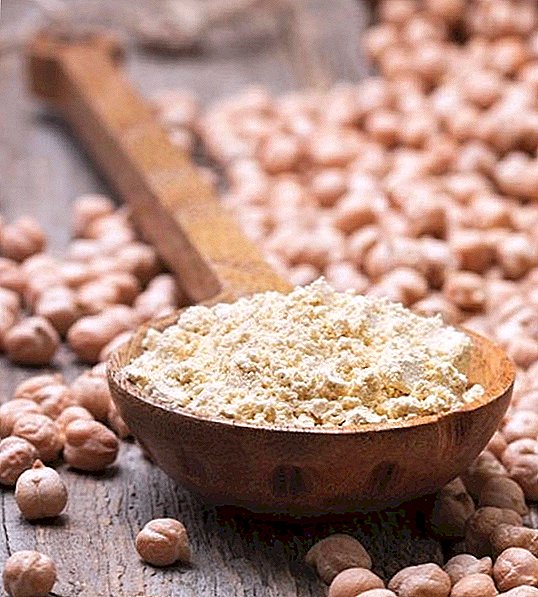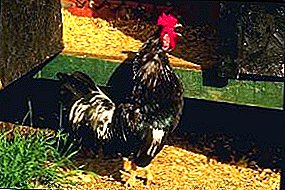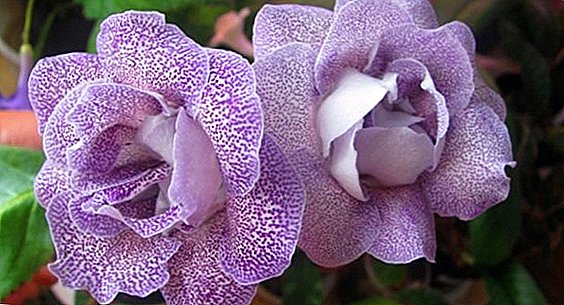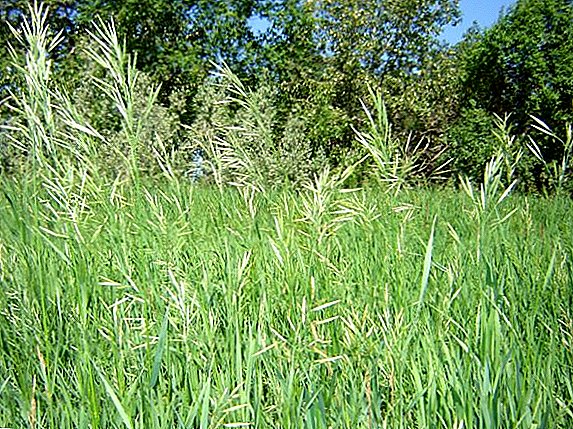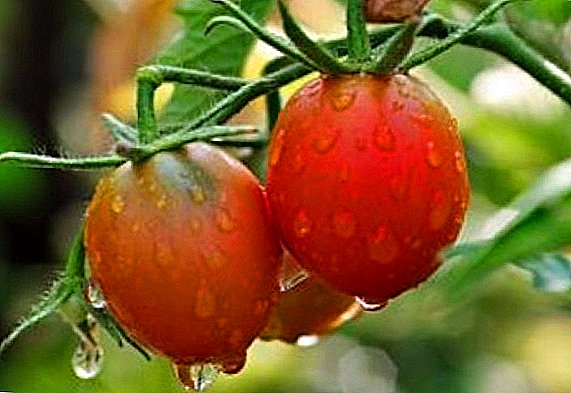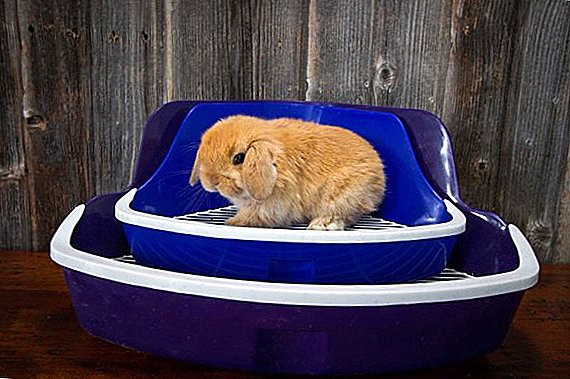 When growing hippeastrum flower growers often face the problem of lack of flowering, when the plant actively develops only leaves.
When growing hippeastrum flower growers often face the problem of lack of flowering, when the plant actively develops only leaves.
The main reason is improper care.
What requirements need to be fulfilled to gippeastrum bloomed, read below.
Basic requirements for growing hippeastrum
The root system of hippeastrum is an onion with roots of rather large size. They do not die off during the period of rest, but continue to perform the functions of nutrition. When choosing capacity for planting, this feature should be taken into account.
Best of all, gippeastrum will develop in a high narrow tank. The optimal distance from the wall of the pot to the bulb is 3 cm. It is also worth considering the depth of the bulb in the soil. It should rise above the soil level by 1/3. Priming mixture should not be too compacted. It is better to wait until it settles, and then add the desired amount of land.
Land for the plant should be well drained, breathable, with neutral acidity.
For planting hippeastrum, you can take the finished store substrate for bulbous cultures, or mix yourself in a ratio of 2: 1: 1: 1:
- sod soil;
- peat;
- sand;
- compost.
A prerequisite for landing is drainage. In the bottom of the pot you need to make a sufficient number of drainage holes. Before filling the tank with the soil mixture, lay a layer of 1-2 cm of expanded clay or perlite on the bottom. Before planting, the bulbs are pre-soaked for 1 hour in hot water (+ 40 ° C) and then treated with Fundazole to protect against fungal diseases.
The optimum temperature for the plant is + 20 ... + 30 ° С. In winter, the temperature may be reduced to + 18 ° C.
Important! Excessive watering during the spitting of the peduncle activates the development of green mass to the detriment of flowering. The plant can shed flowers.
In December, the hippeastrum is placed on a well-lit window sill. At a given period of time, these representatives of the flora are in the resting stage, so in some specimens there may be no leaves at all. Watering is not carried out until the appearance of the flower arrow.
From the moment it is pecked up to the height of 10 cm, watering is carried out very rarely in order to prevent compaction of the earthy coma, but no more. It is best to put water on the edge of the pot or pour it into the pan. The main thing is not to wet the onion.  Gradually increase the amount of moisture, carrying out hydration once a week. After flowering or during it, the plant organism begins to actively increase its green mass and plant the flower stalk, which will bloom next year. In this phase, it is important to maintain soil moisture within 50%.
Gradually increase the amount of moisture, carrying out hydration once a week. After flowering or during it, the plant organism begins to actively increase its green mass and plant the flower stalk, which will bloom next year. In this phase, it is important to maintain soil moisture within 50%.
When the peduncle reaches a height of 15 cm it is possible to carry out the first feeding. At this stage, potash phosphate fertilizer is required. In this regard, wood ash or superphosphate will work well. The ash is diluted with water (3 tablespoons per 1 liter) or added in dry form 1 tbsp. l on a plant, mixing with the top layer of soil.
Learn more about planting and caring for hippeastrum at home.
Superphosphate must be diluted with water, as it dissolves in dry form for too long, and the plants do not get enough food. To 1 liter of water add 1-2 g of powder. Fertilizers are applied every 2 weeks throughout the warm period. At the 20th of August, they stop fertilizing and moisturizing the plants. They are moved to a cool room.
Depending on the variety, hippeastrum can completely lose the leaves before the resting phase. This phase lasts from the end of August to October-November. In the rest phase, watering is not carried out at all or is carried out once a month, depending on the temperature.
There is also the option of growing plants without a pronounced resting phase. To this end, Hippeastrum provide year-round standard summer lighting, irrigate as the soil dries out, and feed. Under such conditions, plants are able to enter the flowering phase twice a year.
In the summer, you can carry out picks on the open area. In the open air, with an increased area of nutrition, the plants develop better, and the bulbs form a large number of children. In September, the flowers dive back into the tank, then return to the premises.
Transplantation of plants is carried out every year one month after completion of flowering or one month before leaving the resting phase. Transplant can not hold at all. In such cases, it is necessary to change 3-5 cm of soil in the pot.  Plants are propagated by separating the daughter from the parent bulbs when they reach 2 cm or more. The second method of reproduction is pollination and seed production. This experience is best done outdoors.
Plants are propagated by separating the daughter from the parent bulbs when they reach 2 cm or more. The second method of reproduction is pollination and seed production. This experience is best done outdoors.
It is important to understand that the formation of seeds will take a lot of strength from the plant body and weaken the root system, which will adversely affect the quality of flowering in the future. Seeds are sown immediately after harvest. The germination scheme is standard, as for any seedlings.
After the emergence of shoots, hippeastrum is moved to a well-lit window sill and maintain the air temperature in the room within + 23 ... + 25 ° С. Young plants do not need a rest period. You can feed them once a month in liquid form. Young hippeastrum with any method of reproduction enter the flowering phase of the 2-3rd year.
Preventive treatments are carried out once a year. To do this, you can use the phytosporin according to the instructions + periodically add as a feed wood ash in a dry form. It is especially important to carry out tillage before transplanting from open ground to closed and vice versa.
Features of the flowering period
The flowering phase lasts from 2 to 3 months. At the end of the rest period, the plant throws out a peduncle, the height of which can vary between 35-80 cm. At the end of the stalk is a large funnel-shaped or tubular flower. Flowers are collected in inflorescences of 2-4 pieces.
Primary colors, depending on the variety:
- white;
- pink;
- scarlet;
- Orange;
- Dark red.
Did you know? The closest relative of the hippeastrum beladonna or amaralis is beautiful. Both plants are able to accumulate poison in their bulbs.
Stamens large with yellow anthers. Go beyond the boundaries of the flower. 
Why does not hippeastrum bloom and what to do at home?
The slightest deviations in the care of hippeastrum can be a factor preventing the formation of peduncle.
No transfers
Given that there is a small amount of soil in a pot with hippeastrum, the onion quickly draws nutrients out of it, wrapping the whole lump with additional roots.
In this case, the solution is an urgent picking into a larger pot. Optimally pick up containers larger by 3-5 cm.
Lack of fertilizer
For the formation of peduncle culture requires a sufficient amount of potash-phosphorus supplements. Optimally alternate superphosphate with wood ash.
Flowering may also be absent if fertilizers are chosen incorrectly, for example, they contain nitrogen. In this case, there is an accelerated formation of leaves, but not the peduncle. In addition, nitrogenous fertilizers can trigger the development of fungal diseases.
Did you know? Hippeastrum got its name and began to be considered a separate species from amaralis only in 1821, while descriptions of such plants occur from 1737. This was blamed on the mistake of Karl Linnaeus, who attributed amaralis and hippeastrum to one species.
After settling the fertilization regime according to the above scheme, you should not wait for flowering in the same year, as the plant will need time to enrich with nutrients and the tab of the peduncle. 
Incorrect conditions
Hippeastrum will not form a peduncle at low temperatures. Culture needs to clearly distinguish between the phases of rest and active growing season. In summer, the plants will not enter the flowering phase at temperatures below + 20 ° C and high humidity, over 70%.
Hippeastrum does not require spraying. They are not carried out even in the driest summer days. The optimum temperature for germination of the peduncle is + 23 ... + 30 ° С at a humidity of 60-70%.
Large pot size
Too large a size of the tank may also be a factor in the lack of colors.
The plant spends all the nutrients to grow:
- the bulb itself;
- additional roots;
- daughter bulbs;
- ground part.
On the formation of the peduncle he simply does not have enough power.
In this case, you will have to either wait until the bulb reaches its optimal size, or else you need to choose the capacity strictly according to the root parameters. The optimal distance to the walls of the pot and the bottom of the bulb is 3 cm.
Bulb too deep
The bulb should be submerged in the soil by half or one quarter. On the one hand, when planting, it seems that this is inconvenient and the bulb will fall out.
Important! When planting, always mentally divide the bulb into 4 parts and embed 25 or 50% depending on the size of the planting material.
But, the plant, deepening and developing its roots, is firmly held in the pot, and the upper part does not subside in the ground and is less subject to attacks by pests. 
No rest period
Hippeastrum requires a period of rest, otherwise it will not be able to recuperate after flowering and will not enter this phase next year.
Before entering the dormant phase, plants should be allowed to lay flower stalks, and restore nutrient deficiencies. Immediately after flowering, growing conditions do not change. Top-dressings and moisture bring in the soil according to the old scheme. A month later, they cease to carry out all these manipulations.
Seed bolls, if the plants are in the open ground, leave in the closed - remove them. Leaves and peduncle are removed only when they begin to die off, changing color and losing density. If the leaves remain dense, then it is completely unnecessary to remove them even during the resting period.
The main thing is to reduce the temperature and partial shade so that the plant does not go to growth. Soil moistening during the rest period may occur once a month or not at all if the humidity in the room is higher than 70%.
Diseases or pests
The reason for the delay in the formation of peduncle may be infection with diseases and pests.
One of the most dangerous ailments for hippeastrum is staganoporosis (red burn of the bulbs). The first symptoms of this disease are red spots and stains on the surface of the bulb sticking out of the ground. Gradually, the infection spreads to the ground part.
When the first symptoms are detected, it is necessary to carefully treat the sharp knife with alcohol, pull the plant out of the pot and cut out all the affected areas, grabbing 0.5 cm of healthy tissue bordering them. After this manipulation, all slices, the bulb itself, must be powdered with a mixture of Fundazole and wood ash (1: 1).  Prepare a new soil, disinfect it with a hot 1% manganese solution and carry out an urgent transplant. Plant the bulb after this treatment should be as high as possible. This will give an opportunity to control her condition. When the danger of relapse passes, you can fill the required amount of soil.
Prepare a new soil, disinfect it with a hot 1% manganese solution and carry out an urgent transplant. Plant the bulb after this treatment should be as high as possible. This will give an opportunity to control her condition. When the danger of relapse passes, you can fill the required amount of soil.
Anthracnose and late blight develop under the condition of cultivation in open ground. The causative agents of diseases are fungal spores, which quickly spread with high humidity. The pathogen is rapidly transported by the wind, with the help of insects. Spores progress faster in the presence of mechanical damage to plants and a lack of potassium.
The first symptoms:
- dark spots on the leaves and bulbs;
- loss of turgor.
The first step is to remove all affected parts of the plant. Then, treat the soil with a 1% solution of Bordeaux mixture and dust all available specimens with Fundazole in combination with wood ash.
Pests affecting hippeastrum:
- shield;
- spider mite;
- onion tick;
- mealybug.
Important! As well as before planting other plants in the area, the soil before picking gippeastrum in open ground should be treated with copper sulphate and carried out 2-3-fold cultivation to a depth of 20 cm in the fall and spring.
When the first symptoms of pest damage appear, it is necessary to eliminate their waste products from the ground part with a sponge soaked in soapy water. Heavily damaged parts are removed, and the cuts are powdered with wood ash. Then carry out a threefold treatment Fitoverm according to the instructions. The interval between treatments 14-20 days. 
How to avoid mistakes in the care
Prevention measures, preventing the development of diseases, pests and problems with the lack of flowering, are to comply with agrotechnical measures:
- annual transplanting in pots exceeding the size of old containers by 4 cm;
- compulsory disinfection of the soil;
- adherence to the vegetative neighborhood when disembarking in open ground - it is unacceptable to place hippeastrum next to onion crops;
- adherence to irrigation and fertilization schedules;
- ensuring a full winter vacation;
- compliance with the rules for the penetration of the bulbs into the soil;
- maintaining optimal temperature and humidity, providing shelter to plants growing in open ground in rainy weather.
Hippeastrum may enter the flowering phase 2 times a year. The main thing is to comply with agrotechnical rules.


